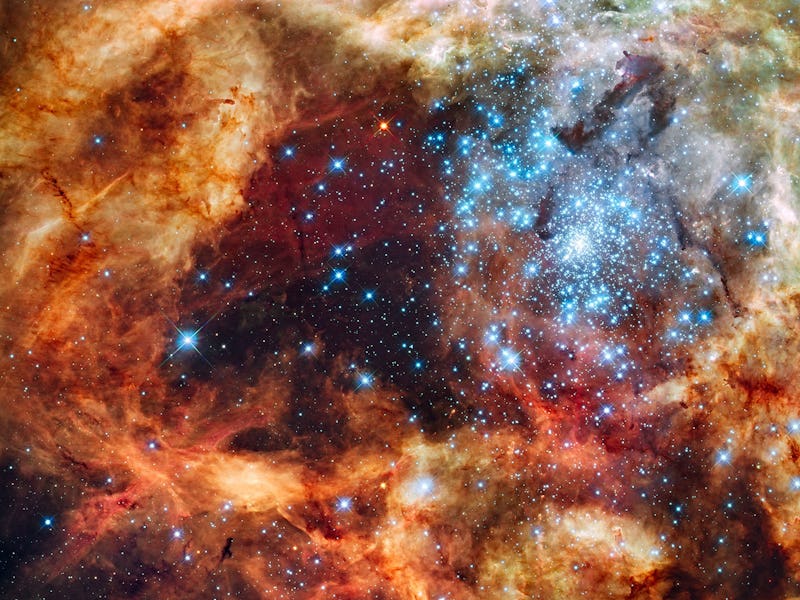European Space Agency: Hubble Spies 9 “Monster Stars”
The cluster outshines Sol by a factor of 30 million.

The universe is sometimes luminous and full of monsters, or so the European Space Agency tells it. Some 170,000 light-years away in deep space, the biggest baddest cluster is R136, where the Hubble Telescope has found nine stars with masses 100 times that of our sun. To put that in perspective: Our own sun is 333,000 times the mass of Earth, which in turn is about as massive to us as we are next to a single carbon atom.
These aren’t the largest stars ever found — that distinction goes to R136a1, 300 times bigger than Sol — what makes this discovery particularly impressive is that the astronomers we able to parse out nine distinct sun signatures. “The ability to distinguish ultraviolet light from such an exceptionally crowded region into its component parts, resolving the signatures of individual stars, was only made possible with the instruments aboard Hubble,” says the University of Sheffield’s Paul Crowther, in a statement. Crowther and his colleagues published a report on the cluster Thursday in the journal Monthly Notices of the Royal Astronomical Society.
Combined, the nine stars are incredibly bright, 30 million times shinier than our star. But the brightness comes at a price — the stars will only last a few million more years before they flare out. Sol’s got loads of time left, warming up increasingly to the point it consumes life as we know it on Earth in 2.8 billion years.
The Hubble, which revolutionized the search for extrasolar bodies, has begun to sing its swan song — the next-gen James Webb telescope will replace it in 2018. But just because it’s aging doesn’t mean its mission is completely over.